The purpose of sales enablement is to optimize sales efficiency and arm sales reps with the collateral they need to persuade buyers at each stage of the cycle. The problem? There's simply too much stuff. While we generally think of marketing as responsible for content creation, most sales teams produce reams of content, from whitepapers and case studies to internal playbooks, scripts, and training documents.
While it may have become easier to store your files in the cloud and across tools, finding those files is a completely different matter. Most companies spread sales enablement assets across multiple places from Box to Dropbox and Google Drive—if they're not stuck in email threads.
This often ends up bottlenecking your sales funnel as reps try to produce new, and often duplicative content.
According to one study of 20,000+ closed deals, 90 percent of marketing content goes entirely unused by sales.
Each time a sales rep has to ask marketing where the last Q4 presentation is or search their email for it is precious time that could be spent actually talking to reps.
That's why it's so important for sales enablement teams not just to store digital assets, but to create a companywide system that enables the sales team to find, organize, and replenish the content they need.
Map sales content to people
The problem with storing all your sales enablement content in a folder in the cloud somewhere is that the content becomes divorced from the people who are actually using it. When a sales rep is chatting on the phone to a design manager from the construction industry, the last thing they're thinking about is that subfolder labeled “Construction” that lives in a dusty corner on the cloud.
Instead, they're thinking about stuff like what the key selling points of your product are for construction, or how the construction industry enables software procurement. Trying to organize your sales content in a human-centric way simply doesn't work with a hierarchical filing system, which enforces a one-way route to information.
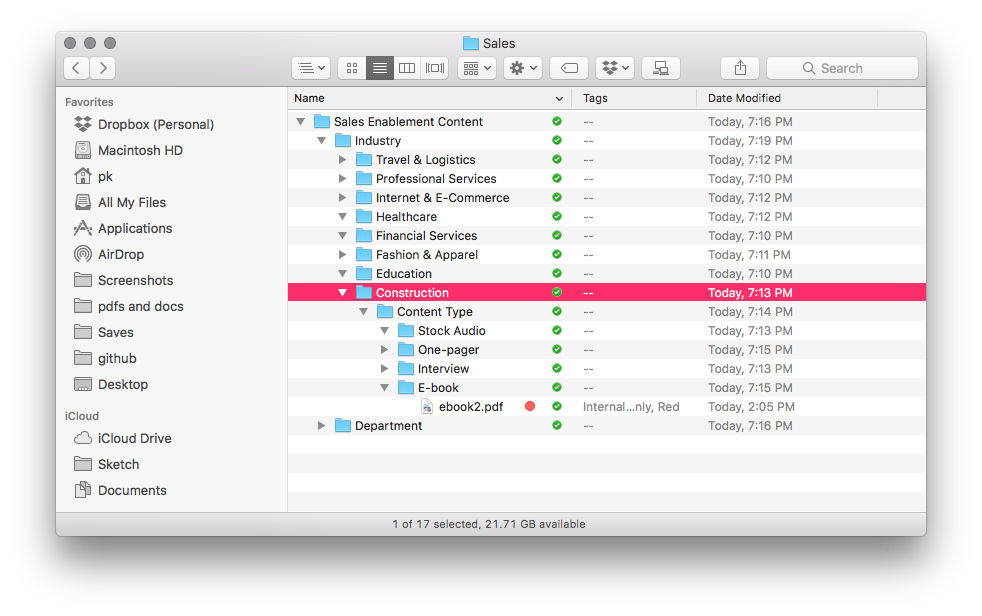
A sales rep trying to find an ebook for a construction manager has to click through a bunch of folders to locate the right information. That complexity grows exponentially as you give people more access to the folders.
Instead, you want to visually lay out your content in a way that makes intuitive sense to the human brain. In the grid below, a sales rep can directly locate all content for design managers, all content around construction, or even all one-page construction content for design managers.
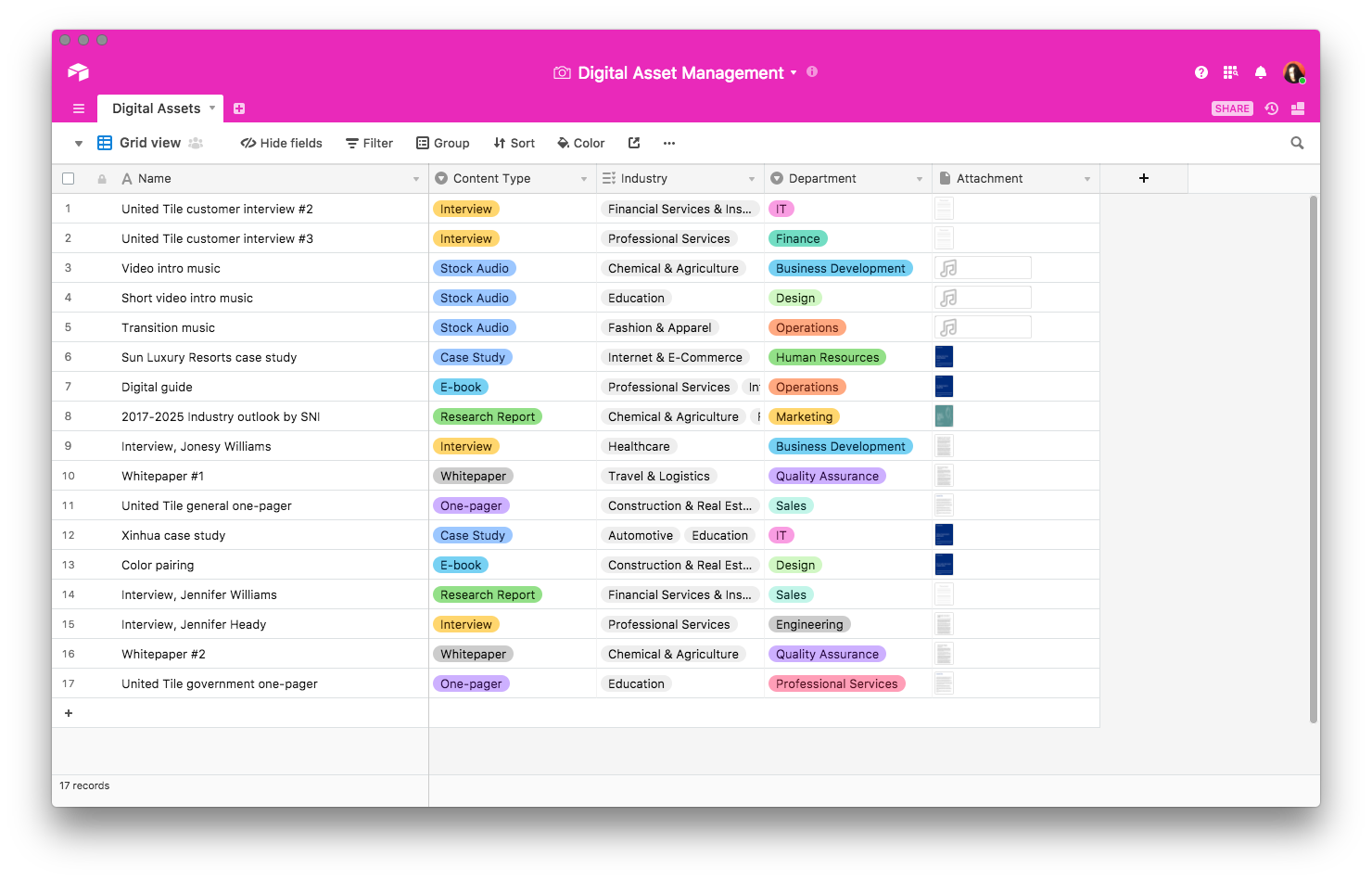
Right away that gives you a ton of flexibility within your sales content. Let's say that a sales rep has an early call with a customer in the agriculture industry. Your rep can immediately locate the relevant piece of content, preserving the full context around it—rather than having to click through a bunch of files and folders.
Expand your metadata
So you've created an easy organizational schema that surfaces sales content for people within your team to a specific audience. While that goes a long way toward making your content more accessible, it doesn't cover all your bases.
One of the biggest challenges of running a sales enablement team is that you work across teams. You might rely on marketing to help with content production, or business development. Further complicating the matter is the organizational complexity of the content itself. Certain whitepapers or case studies might contain sensitive information, and should only be shared upon request. Other pieces of content might be in progress, and require more work before they can be sent out.
By expanding your taxonomy and metadata around your sales enablement repository, you can make your content even more accessible.

Here are some questions you might ask to identify potential places you can categorize content further:
What metrics will you use to measure success?
- Deal size
- Sales cycle by stage
- Lead source
What types of content categories are in your sales enablement repository?
- Case studies
- Research reports
- One-pagers
What's the status of the document?
- Requested
- In development
- Current
- Retired
Are there any restrictions around how to use the content?
- Free to use
- Upon request
- Online only
- Internal only
Fundamentally, these categorizations give you the ability to organize and sort your sales content according to different needs.
Because each piece of content is associated with a status, you can create a separate view for the sales enablement team that shows the current state of each piece of content in your repository:
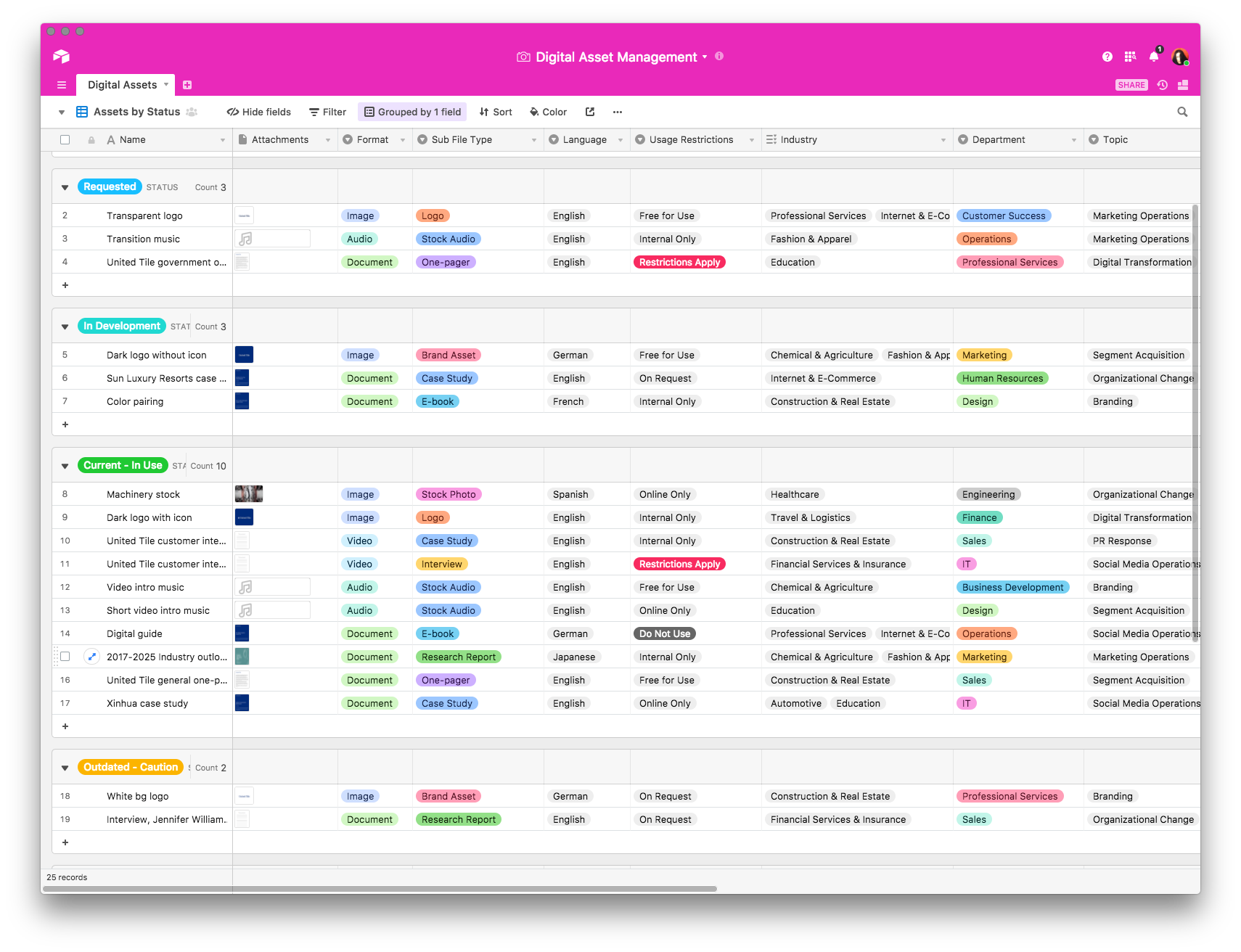
That makes it easy for team members to quickly locate which whitepapers or assets need to be produced, which are in progress, and which need to be taken out of circulation.
Alternatively, say that your company is doing a big push into Canada. You can create a separate gallery view for assets filtered by the location field, making it instantly accessible.
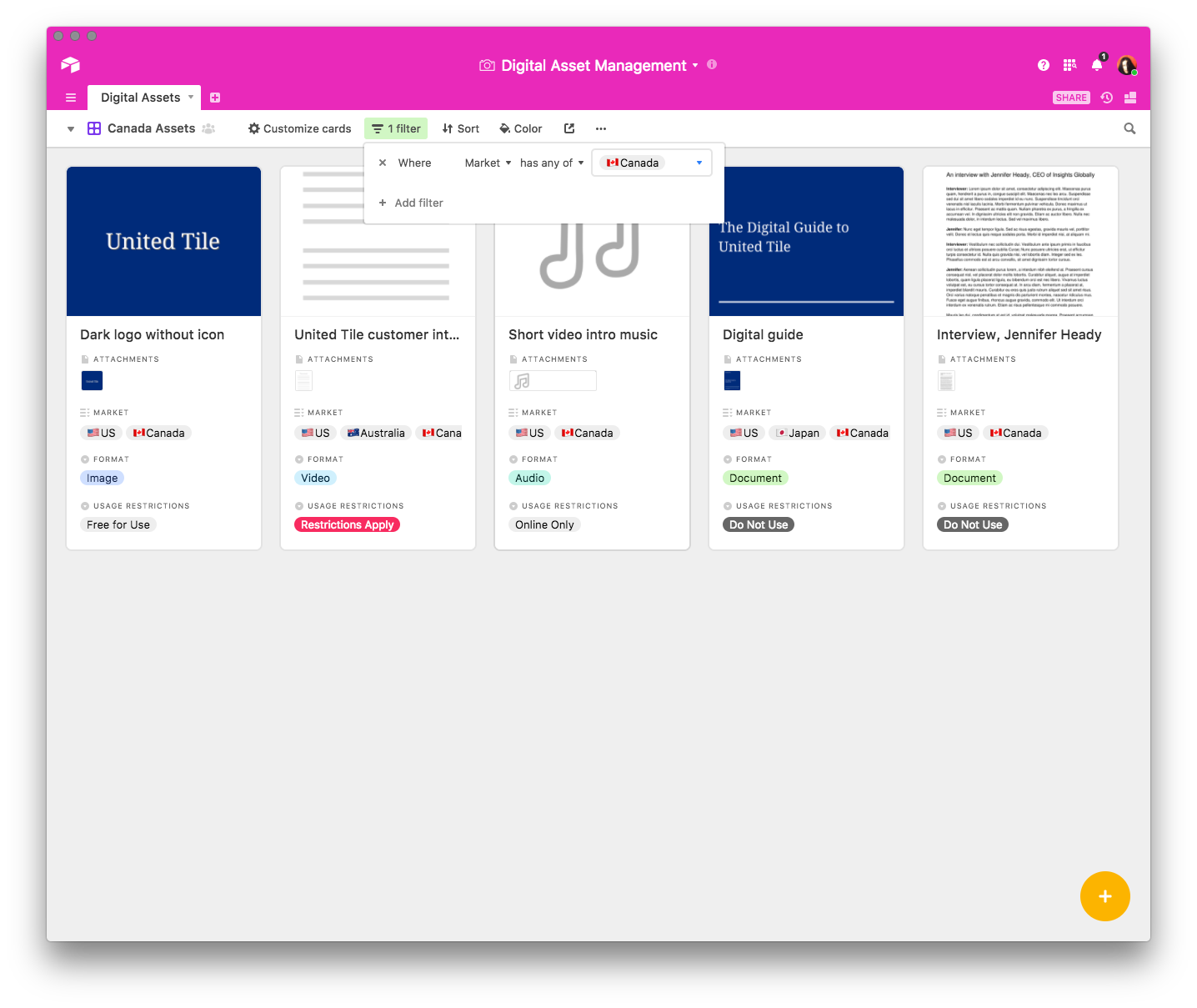
If a rep was specifically targeting engineering and IT executives in the travel and auto industry, they could quickly create the filtered view below:
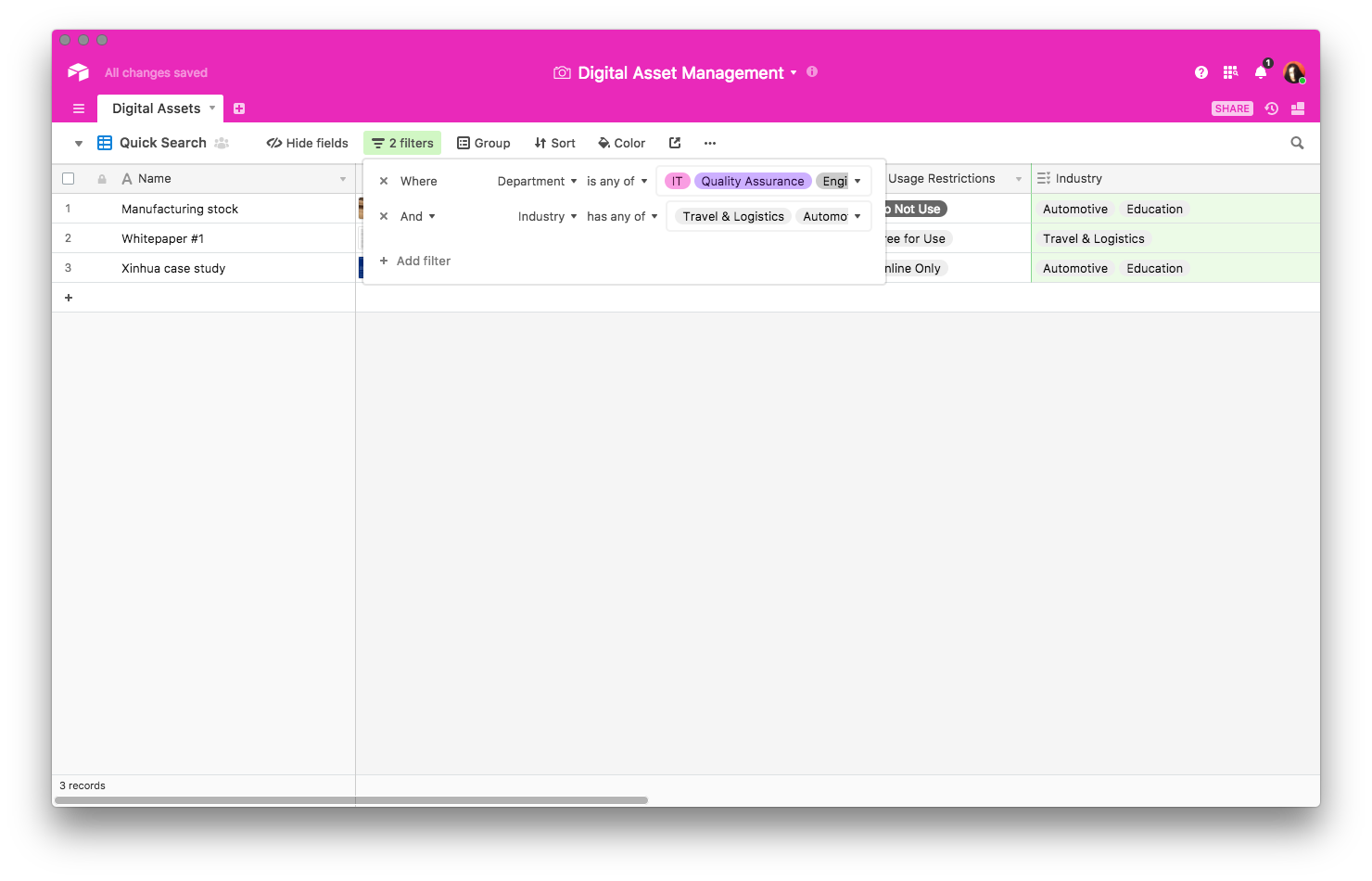
The more content that you have to process, the more valuable this kind of system becomes, because it allows sales reps to slice and dice the content according to a flexible set of criteria.
Integrate across the company
Now that you have an organizational structure in place that allows you to flexibly slice and dice your sales collateral, the final step is to make sure that it's being consistently replenished with new assets.
As Liz Cain, the VP of Go-to-Market at OpenView writes, “getting things done hinges on your ability to work cross-functionally, influence others and crowdsource the information and support you need.” She recommends asking, “What is your rhythm with sales operations, product marketing, demand generation, and so forth? Each of these teams is also trying to support the revenue cycle and their work as to be integrated with yours.”
The trick is to keep your process lightweight, especially at the beginning. Making your operations team remember to rename a file and add five tags will drive down your participation rates. Instead, create an easy way that anyone across teams can add new assets to your sales repository.
Here's a sample form created in Airtable that lets you do just that:
To submit a document, all team members have to do is add a title, drag and drop a PDF, and hit submit. You can categorize assets further within the base, or comment on the record, asking someone to fill it in.
No matter what system you establish, it's important to acknowledge that you won't be able to get all teams to switch over right off the bat. One report estimates that the average enterprise sales org uses between five and six cloud storage providers, from Google Drive to Dropbox and Box.
Instead of trying to force-feed your latest and greatest organizational system on the rest of the company, make your system easier to access by hooking it up to the ones that are already in place.
Say that your marketing team relies heavily on something like Dropbox to manage all their internal content. You can easily automate adding new content to your base by setting up an integration with Zapier.
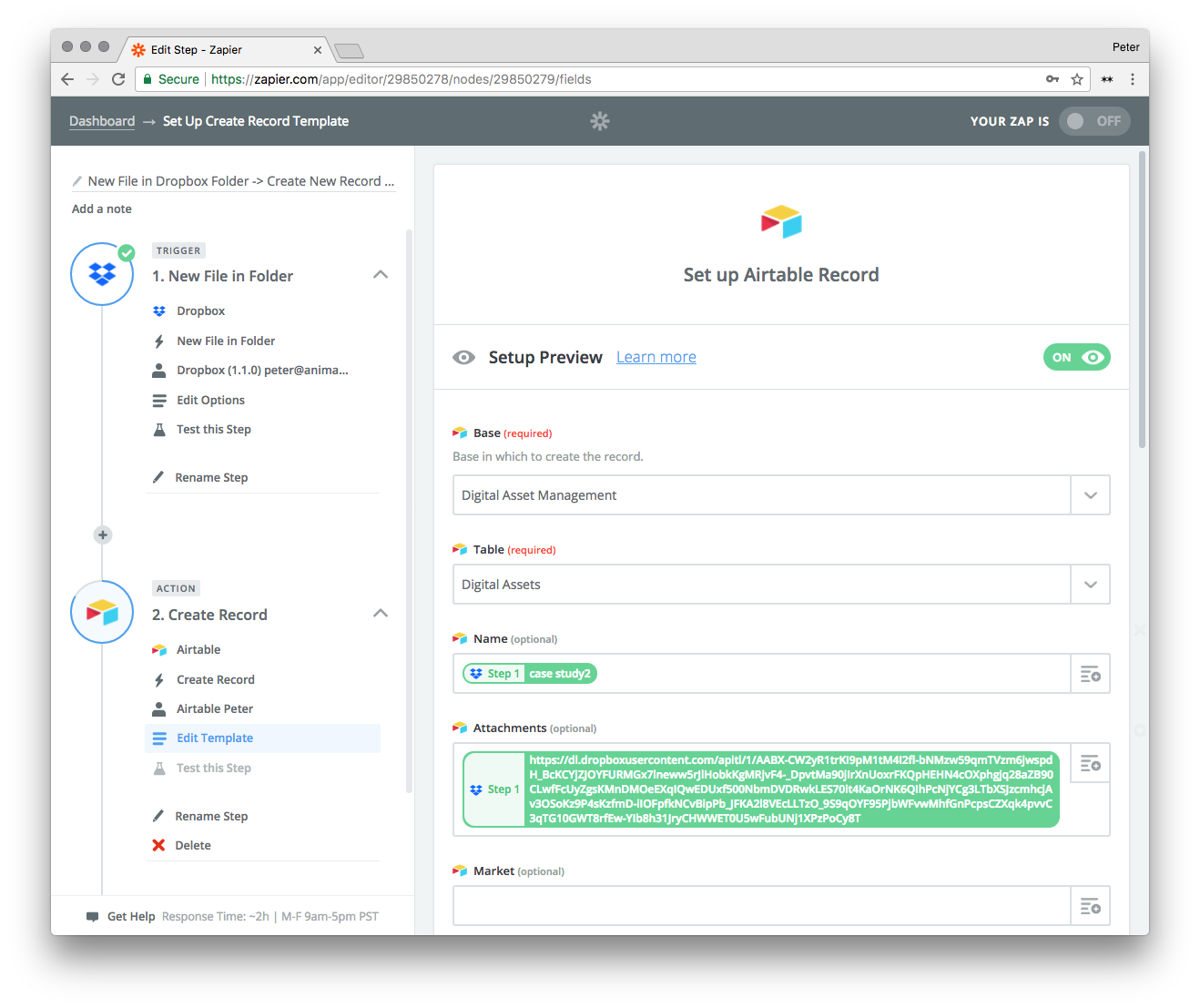
After all, the bigger goal of sales enablement is to increase efficiency along the sales cycle. That means automating and eliminating repetitive tasks—like searching for specific files and folders.
Constantly optimize
The challenge of sales enablement is that it never ends—that's also the fun of the job. As you develop newer products, close more deals, and learn more about your market, you'll have to tweak your sales cycle accordingly. The more you enable your sales team to produce, the more content you add to your repository in a virtuous cycle.